
Tanner Springs Park, in the Pearl District of Portland, Oregon, is a unique example of ecological sustainability within an urban area. It was built on a former industrial site, and a natural habitat was created to represent the historic ecosystem that existed in this part of the Willamette River valley prior to development of the city.
The site slopes down from west to east, and the western end is planted with trees to portray an Oak savannah prairie. A native grassland was planted downhill from the savannah, sloping down into a wetland, and ultimately to a pond at the east end of the park.
All rain water that falls within the park boundaries is cleansed and recycled on site. Water seeps into the soil, migrates to a subgrade cistern, and is then treated by an ultraviolet light system, also located under ground. The clean water then emerges as a “spring” in the grassland, and flows through a meandering runnel into the pond.
Some materials installed in the park also represent the industrial past of the city. Belgian blocks that pave some of the walkways were originally used as ballast on ships that navigated the Columbia River, and later used as surfacing for Portland’s streets. Also, an art installation at the east end of the park consists of a wavering wall of vertical rail tracks, interspersed with blue stained glass panels displaying images of insects – a merging of man-made and natural references. The rail tracks are relics of 19th century Portland.
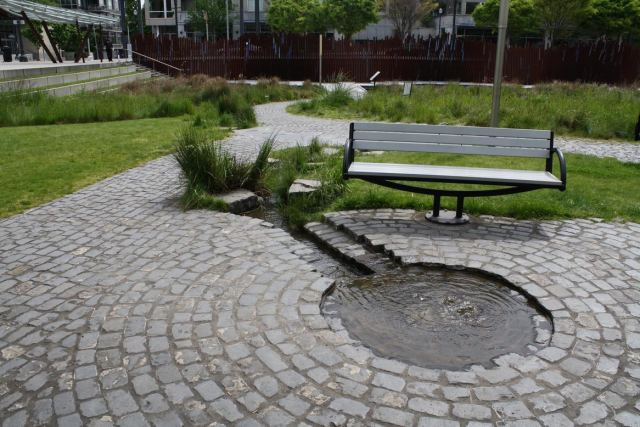
A “spring” emerges from the ground in the prairie zone.
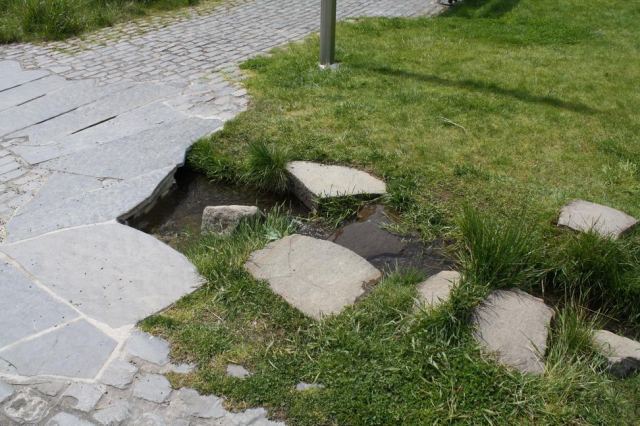
Water flows from the “spring” through a winding runnel.

Cobbled walkways transition to stone dust surfacing in the grassland zone.
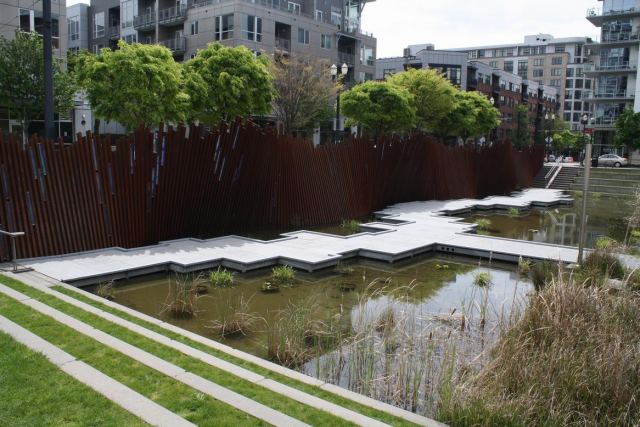
A pond is situated at the east end of the park.
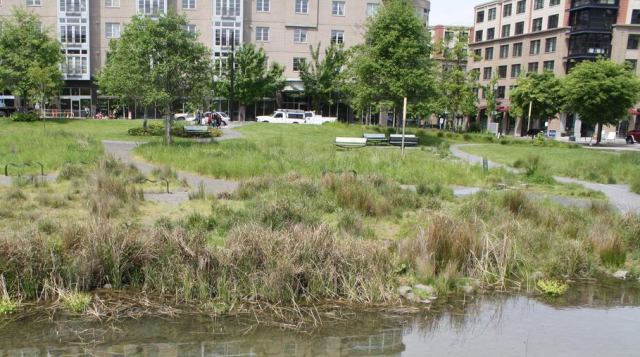
View to the west: pond in foreground, followed by wetland, native grassland, and Oak savannah prairie zones
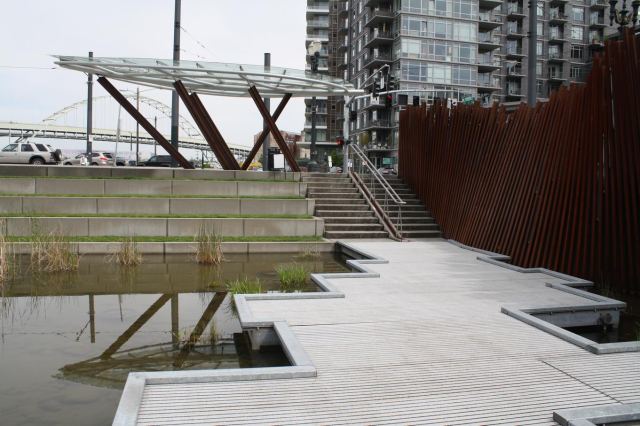
Shelter, boardwalk, & rail track wall
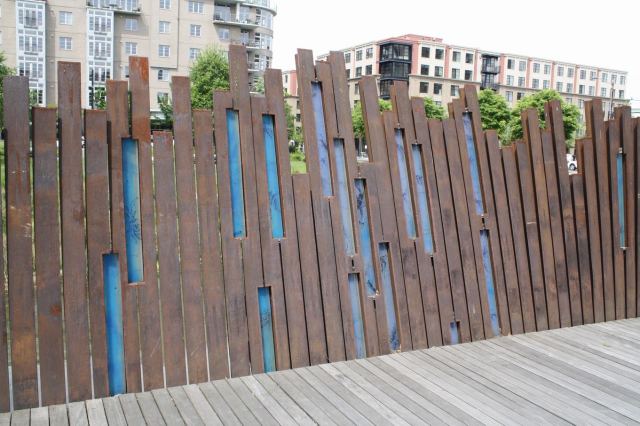
Back (street) side of rail track wall
Photos by Alice Webb
